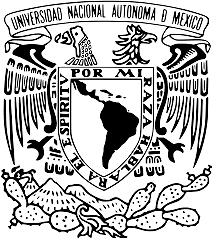Seminar by Dr Teresa Hernandez Flores

Date
Location
Description
SPEAKER: Teresa Hernandez, National Autonomous University of Mexico
TITLE:Modulation of direct pathway striatal projection neurons by muscarinic M4-type receptors
Abstract:
Models of basal ganglia (BG) function postulate a dynamic balance between two classes of striatal projection neurons (SPNs): direct pathway neurons (dSPNs) that facilitate movements, and indirect pathway neurons (iSPNs) that repress movement execution. Two main modulatory transmitters regulate the output of these neurons: dopamine (DA) and acetylcholine (ACh). dSPNs express D1-type DA, M1-and M4-type ACh receptors, while iSPNs express D2-type DA and M1-type ACh receptors. Actions of M1-, D1-, and D2-receptors have been extensively reported, but we still ignore most actions of muscarinic M4-type receptors. Therefore here we studied the M4-type receptors. Here we used whole-cell recordings in acutely dissociated neurons, specific pharmacological tools such as mamba-toxins, and BAC D1 or D2-eGFP transgenic mice to identify direct or indirect pathway neurons. Here we showed that activation of M4-type receptors with bath applied muscarine enhanced Ca2+-currents through CaV1 channels in dSPNs but not in iSPNs. This action increased the excitability of dSPNs after both direct current injection and synaptically driven stimulation. The enhancement in Ca2+-current and excitability were blocked specifically by mamba toxin-3 (MT-3), suggesting mediation via M4-type receptors. M4-receptor activation also increased network activity of dSPNs but not of iSPNs as seen with calcium-imaging techniques. Moreover, an interaction between D1-type and M4-type receptors in dSPNs was observed and their effects may add to produce a larger enhancement of excitability of dSPNs or, paradoxically, oppose each other depending on the order of their activation. Together these results suggest that the activation of M4-type receptor increases excitability of the direct pathway selectively, and therefore it is proposed they may help to recover activity in pathological conditions such as Parkinson's Disease where the absence of dopamine creates an imbalance where the activity of the direct pathway is reduced and is augmented in the indirect pathway. Therefore, it is proposed that the use of specific cholinergic drugs may improve symptoms of the disease.
Attachments
Subscribe to the OIST Calendar: Right-click to download, then open in your calendar application.



